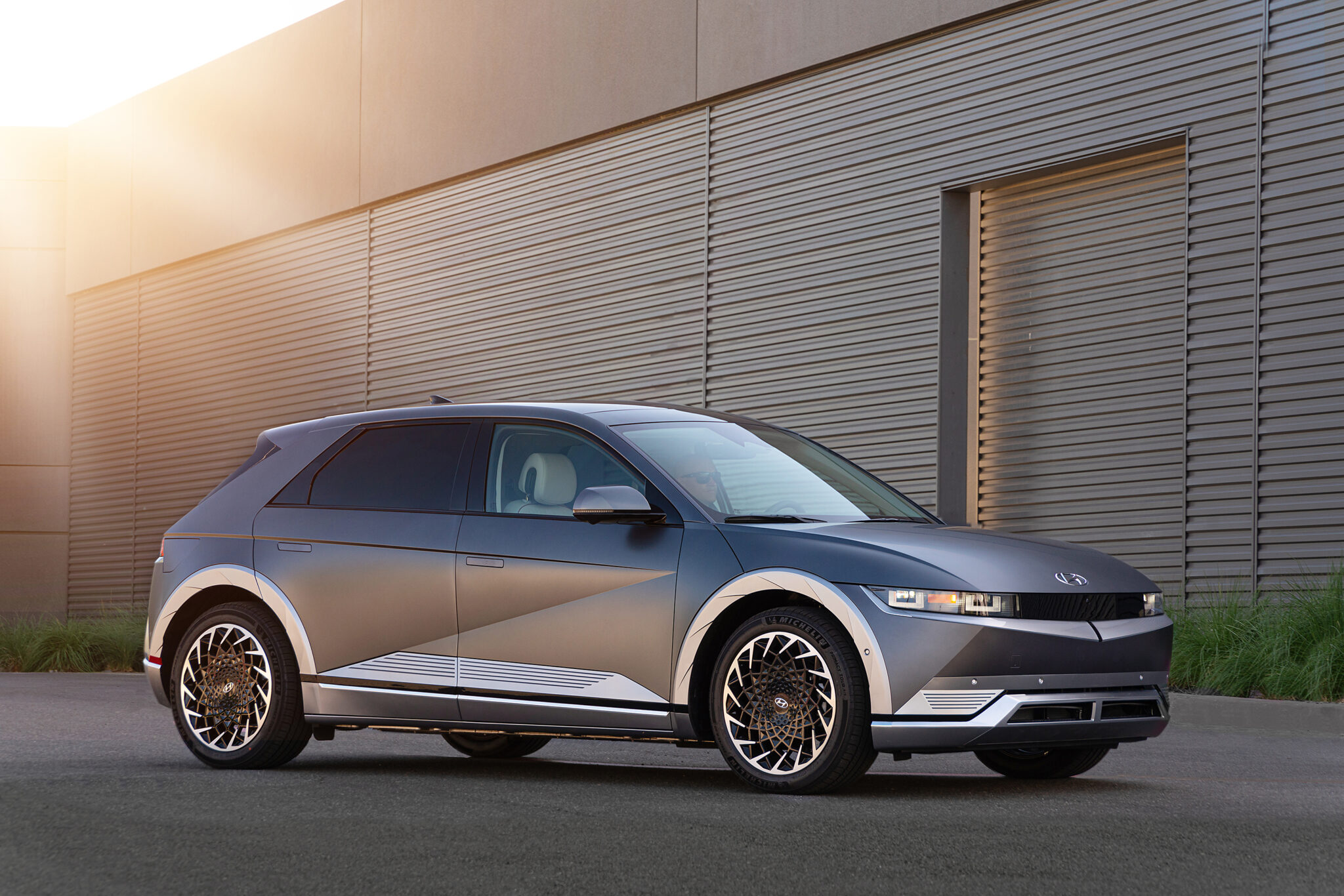
Hyundai's Ioniq5 EV
Electric vehicles are seemingly everywhere these days. Every week it seems a traditional automaker unveils a new electric-powered vehicle that promises to be the next big thing. And some of them really are. Manufacturers like Ford, General Motors, BMW, Hyundai, Mercedes-Benz and others, as well as non-traditional EV makers like Lucid, Rivian and Tesla, are all in it to win it. Napleton News has had a chance to dip our toes into the river. Here’s what we found.
General Motors was probably first with their electric Saturn EV1 vehicles that were only available for lease through your local Saturn dealership. At the end of the lease term, lessees returned the cars, which GM studied to see how viable an EV could be on a day-to-day basis. Eventually, they were data-mined for all the info they could provide and then destroyed. But a couple of them still remain out there, somewhere. Check your local science and technology museum for an idea of just how far we have come.
The concept is simple, really. There is a car body, four wheels, one or more electric motors and a battery pack. There’s also air conditioning, a charging plug, radio and all the other features we rely on every day from our more traditional gas-powered vehicles, too. But let’s not complicate things at this point.
Instead, think of an EV as a real life-size version of the battery-powered radio control cars you might have played with as a kid. Except they can go much further on a battery charge than your RC car could. How far? Most modern-day EVs can travel at least 200 miles between charges. Some like the Lucid Air, Tesla Model S and others can go double that amount or more. But studies have shown that most drivers rarely exceed 32 miles in a day. So “don’t get above your raising,” if you know what we mean.
Will you use the EV just for commuting, or do you plan on going longer distances? Will there be charging facilities at the destination? Do you live in colder climates or use the heater a lot? You might need to consider those conditions before purchasing. Why you may ask? According to AAA research, batteries lose up to 41-percent of their charge in extremely cold temperatures, like 20 degrees. On the other hand, they lose only 17-percent of their charge when the temps are hovering around 95 degrees. And that’s when the air conditioning is blowing icicles.
That depends on what type of charger you have (or are connected to) and how much charge remains on your battery. Plugging a charging cord into a household outlet can take as long as 12 hours or more. This could be problematic if you need to get somewhere fast. Public chargers like Tesla’s network or other companies like Electrify America or ChargePoint offer faster level II chargers or “superchargers” to do the job faster. Some will provide an 80-percent charge in around 20 minutes.
Currently, there are around 50,000 chargers around the country. Thanks to the new infrastructure plans, those numbers should increase substantially.
Just as with traditional cars, trucks and SUVs, there are a wide variety of vehicles to choose from. Interested in basic transportation? Then the EV automakers have you covered. If you desire a sports SUV, there’s a vehicle for you, too. What about a more luxurious lifestyle? There are options for you, as well.
The bottom line is this: You can spend as much or as little on a new EV. The choice revolves around how much pressure your wallet can stand and your needs at the moment.
Surprisingly, it doesn’t cost as much to maintain an electric vehicle. That’s when you compare it to the cost of maintaining a gas-powered one. There are fewer mechanical parts, no oil changes, tune-ups or engine filter replacements. Once again, our friends at AAA point out that a typical EV driving 15,000 miles will require approximately $550 in battery charging vs. $1,225 in fuel costs. Maintenance costs run around $950 for EVs and $1,280 for gasoline-powered vehicles.
There’s still so much to learn about this new, exciting technology. Take the time to ask your EV-driving friends. Everybody has one! Find out about their electrified experiences as they relate to ownership, upkeep and driving experiences. Then contact the dealership of your choice to find out more about their brands of electric vehicles.
At that point, you’ll be in the catbird’s seat when it comes time to plug into this new electrifying lifestyle.
This post was published on November 29, 2021
The new Lexus TX 350 is taking up space. Not in a bad sense but… Read More
Destined for the cutting room floor after model year 2023, the Chrysler 300 makes its… Read More
Napleton Automotive Video Review Maserati Levante Napleton Automotive is loving the Maserati Levante Luxury SUV!… Read More
The Mercedes-AMG SL55 Roadster is something else. Not content to be a standard drop top… Read More
Shopping for a new vehicle with good options at a great price point? Napleton Automotive… Read More
The Kia K5 Sedan, in a world of SUVs, still shines In a world of… Read More